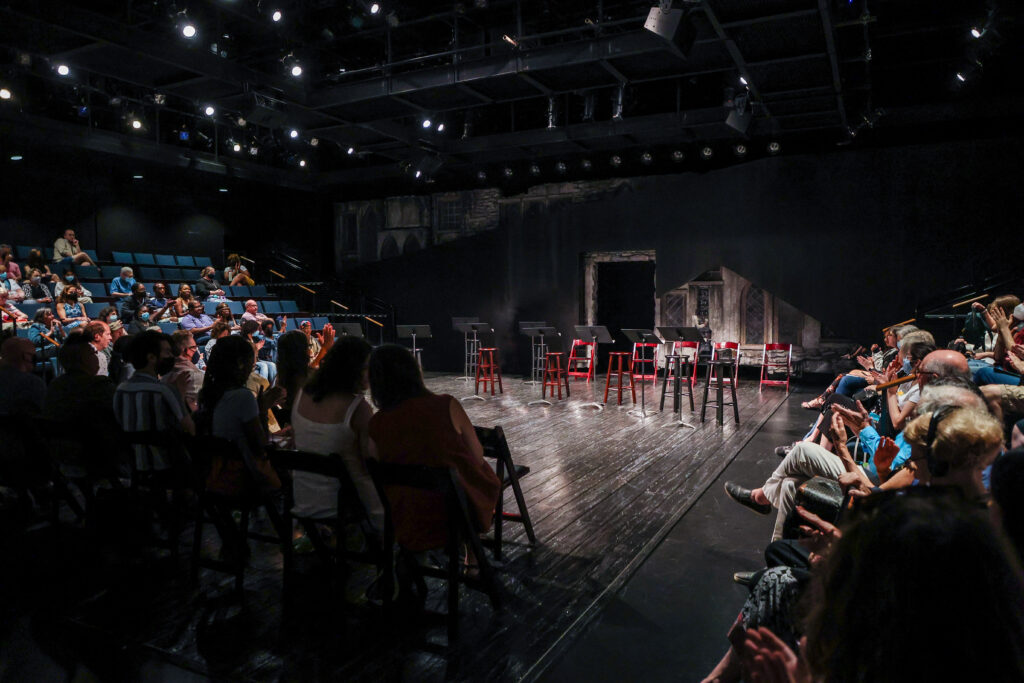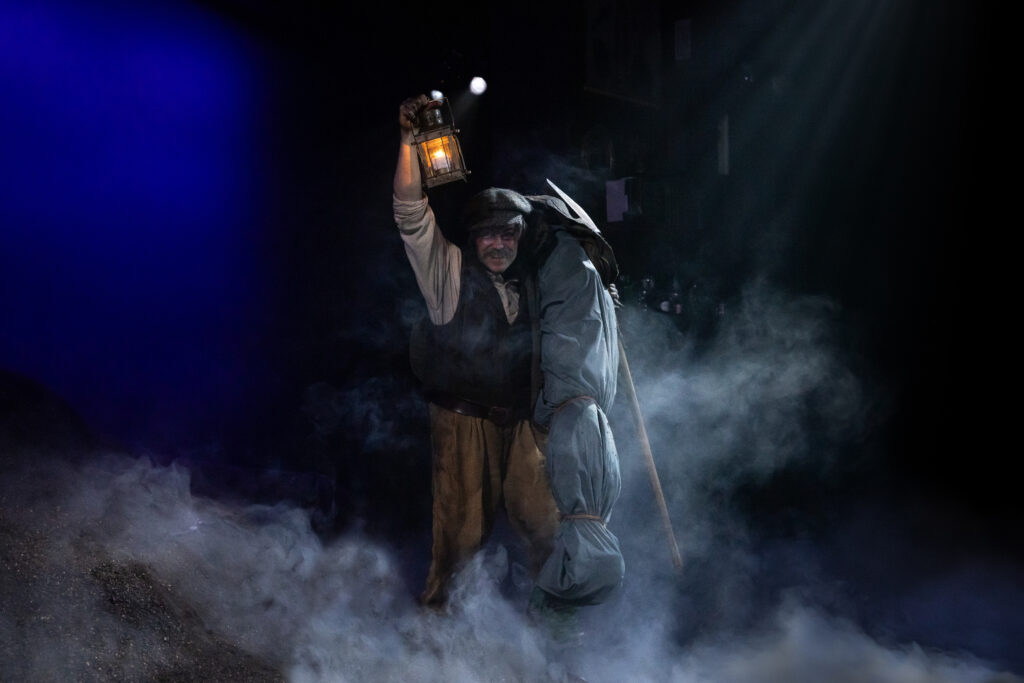By Makaylee Secrest
The Mirror Crack’d is a new stage adaptation of Agatha Christie’s classic murder mystery featuring her beloved amateur sleuth, Miss Marple. First introduced in the 1930s novel The Murder at the Vicarage, Miss Marple became a fixture in Christie’s work for nearly fifty years. This particular story, published in 1962, comes much later in the series and finds both Marple and her once-familiar village facing the unsettling challenges of a modernizing world.
In the earlier Miss Marple novels, Agatha Christie romanticizes a slower, more intimate way of life, where gossip travels as reliably as the post and a steady rhythm of church bells marks the day as surely as any clock. But the tight-knit village of St. Mary Mead isn’t just a charming setting: it’s essential to Miss Marple’s method. In a place where everyone’s habits, histories, and secrets are common knowledge, even the smallest behavioral shift stands out. Marple’s familiarity with village life gives her a sharp eye for uncovering truths that others, even the police, might miss.
However, by the time a 62-year-old Agatha Christie was writing The Mirror Crack’d in 1962, this idyllic English countryside lifestyle was disappearing. Over two-thirds of the population now lived in towns and cities, a shift fueled by the postwar baby boom and government policies like the New Towns Act of 1946, which sought to combat overcrowding by developing planned communities. Suddenly, rows of nearly identical modern houses sprang up, cars clogged the once-quiet roads, and indoor toilets replaced outhouses.
These rapid changes to infrastructure also ushered in major social reform. With more jobs and better access to education, traditional gender and class roles began to shift. Women entered the workforce in greater numbers, often taking casual jobs for extra “pin money.” And with these faster-paced lives came the need for convenience. In 1961, the arrival of sliced white bread quietly marked a new era in which efficiency took priority over tradition.
Rather than keep the Marple mysteries frozen in a moment in time, Christie skillfully weaves these cultural shifts into The Mirror Crack’d by introducing a new housing development on the village’s edge. She further highlights the spread of modern values through the presence of Hollywood movie star, Marina Gregg, who takes up residence in one of the village mansions. St. Mary Mead is no longer the village Marple once knew. Its streets are filled with unfamiliar faces, women now wear trousers instead of skirts, and supermarket aisles have replaced friendly chats at the local grocer’s counter. When a woman is mysteriously poisoned, Marple’s investigation is complicated by these changing dynamics. New residents bring unfamiliar backgrounds, and shifting lifestyles obscure motives that were once easier to read.
Just as England’s countryside is losing its old identity, so too is Miss Marple. At the start of the story, Miss Marple is feeling her age, recovering from an injury, increasingly sidelined, and uncertain if her once-sharp instincts still hold in this new world. Nostalgic for the past, she struggles with the changes around her as they remind her of her own mortality and fading relevance. But a stroll through the sprawling new housing development changes everything. Watching the young people there going about their lives, she realizes that while the landscape has changed dramatically, human nature hasn’t changed a bit. This revelation reignites Marple’s confidence and sets the stage for her most gripping and dynamic investigation yet.








